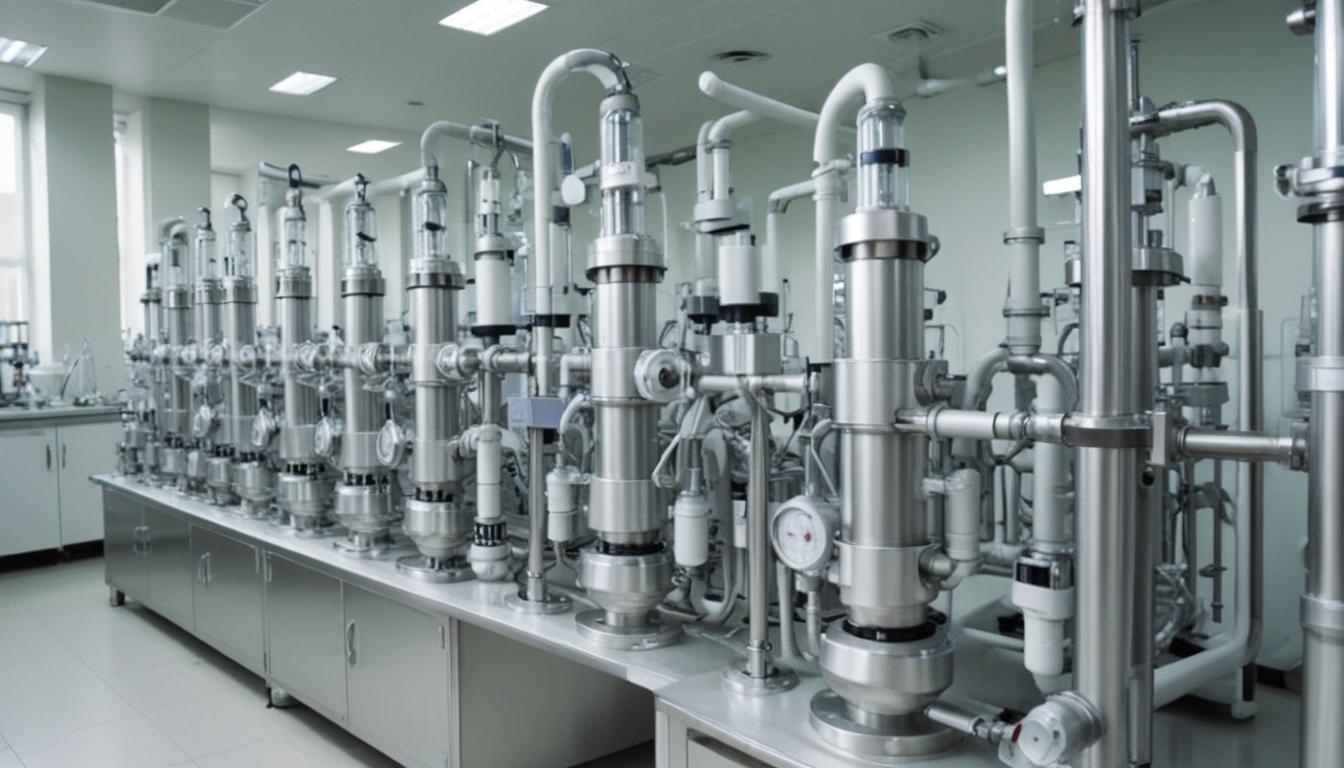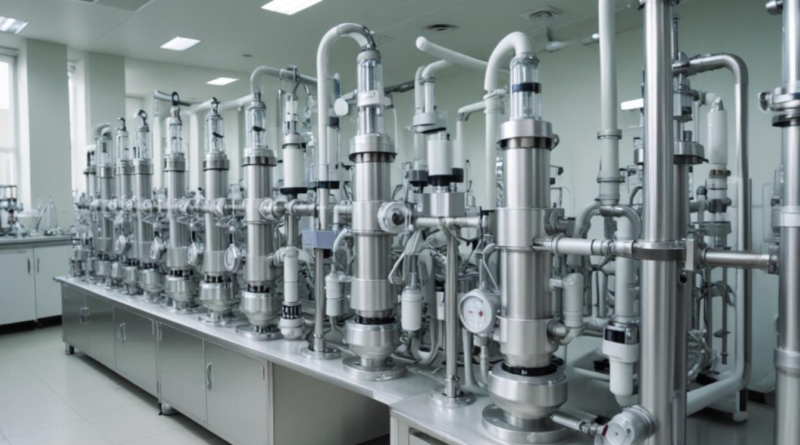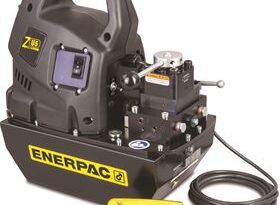pumps used in the pharmaceutical research
In the realm of pharma research pumps, several types are utilized to meet the diverse needs of pharmaceutical research laboratories. Each pump type offers unique characteristics that make them suitable for specific applications within the industry.
One of the most commonly used pumps is the peristaltic pump. This type employs a series of rollers that compress a flexible tube, propelling the fluid forward. Peristaltic pumps are favored for their ability to handle sterile and corrosive fluids without contamination, as the fluid only contacts the tubing.
Syringe pumps are another essential category, renowned for their precision in delivering very accurate flow rates. These pumps operate by moving a syringe plunger at a controlled rate, making them ideal for applications requiring meticulous volume measurements, such as in analytical experiments and controlled drug delivery systems.
Gear pumps are characterized by their robust construction and ability to handle high-viscosity fluids. They function by interlocking gears that transfer the fluid through the pump, ensuring a steady and continuous flow. This makes them suitable for processes that involve thick or sticky substances commonly encountered in pharmaceutical formulations.
Diaphragm pumps utilize a flexible diaphragm oscillating within a chamber to move fluids. They are particularly useful for applications that require the handling of volatile or toxic liquids, as they can provide leak-proof operation and precise flow control.
The following table provides a summary of the key types of pumps used in pharmaceutical research:
| Type of Pump | Operating Principle | Key Features | Common Applications |
|---|---|---|---|
| Peristaltic Pump | Rollers compress tubing | Contamination-free, handles sterile fluids | Cell culture perfusion, sterile media transfer |
| Syringe Pump | Syringe plunger movement | High precision, accurate flow rates | Analytical experiments, drug delivery systems |
| Gear Pump | Interlocking gears | Handles high-viscosity fluids, robust | Pharmaceutical formulation, viscous liquid transfer |
| Diaphragm Pump | Oscillating diaphragm | Leak-proof, precise control | Handling volatile or toxic liquids, precise dosing |
Understanding the various types of pumps available is crucial for selecting the most appropriate equipment for specific applications in pharmaceutical research. Each pump type offers distinct advantages that cater to the demanding requirements of the industry.
Applications in pharmaceutical research
Pharma research pumps play a pivotal role in numerous facets of pharmaceutical research, enhancing precision, efficiency, and reliability across various processes. Their versatility allows them to be integral components in multiple applications, each demanding specific types of pumps to meet stringent industry standards.
One primary application is in drug formulation and processing, where accurate dosing and mixing are critical. Peristaltic pumps ensure contamination-free transfer of active pharmaceutical ingredients (APIs) by maintaining a closed system, thereby preserving the integrity of sensitive compounds. Similarly, gear pumps are employed to handle high-viscosity formulations, ensuring consistent flow rates during the blending of viscous materials.
In analytical testing, precision is paramount. Syringe pumps are extensively used for their ability to deliver exact volumes, which is essential for assays and chromatographic analyses. Their high precision minimizes variability, ensuring reliable and reproducible results in drug testing and quality control.
Bioprocessing and cell culture operations benefit significantly from diaphragm pumps. These pumps provide gentle and precise control over fluid movement, which is crucial for maintaining sterile conditions and supporting the growth of delicate cell cultures. Their ability to handle volatile and toxic liquids also makes them suitable for transferring cell media and reagents without risking contamination.
High-throughput screening (HTS) in pharmaceutical research relies on pumps that can swiftly and accurately dispense small volumes of liquids. Syringe pumps and peristaltic pumps are commonly used in HTS setups to automate the delivery of compounds into assay plates, facilitating rapid screening of potential drug candidates.
Sample preparation for various analytical techniques also utilizes specialized pumps. Diaphragm pumps are favored for their ability to manage volatile solvents and reagents, ensuring that samples are prepared under controlled conditions without loss of integrity.
In controlled drug delivery systems, the precision of syringe pumps is indispensable. These pumps enable the development and testing of microdosing devices, where accurate and steady delivery of medication is necessary to evaluate therapeutic efficacy and pharmacokinetics.
The following table outlines key applications of pharma research pumps along with the most suitable types for each application:
| Application | Suitable Pump Type | Key Benefits |
|---|---|---|
| Drug Formulation and Processing | Peristaltic Pump, Gear Pump | Contamination-free transfer, handles high-viscosity fluids |
| Analytical Testing | Syringe Pump | High precision, accurate volume delivery |
| Bioprocessing and Cell Culture | Diaphragm Pump | Gentle fluid control, maintains sterility |
| High-Throughput Screening (HTS) | Syringe Pump, Peristaltic Pump | Automated dispensing, rapid throughput |
| Sample Preparation | Diaphragm Pump | Controlled solvent handling, prevents sample loss |
| Controlled Drug Delivery Systems | Syringe Pump | Precise dosing, steady delivery rates |
Moreover, in synthetic chemistry processes, pumps facilitate the continuous flow of reactants, enhancing reaction efficiency and scalability. Peristaltic pumps are ideal for such applications due to their ability to handle a variety of solvents and reactants without cross-contamination, supporting the synthesis of complex pharmaceutical compounds.
Sterile dispensing and aseptic processing are critical in the production of injectable drugs and other sterile formulations. Diaphragm pumps ensure leak-proof operation and precise control, maintaining the sterility of the environment and preventing contamination during the dispensing process.
In summary, the integration of specialized types of pharma research pumps into various applications within the pharmaceutical industry not only optimizes processes but also upholds the high standards required for drug development and production. Their ability to deliver precise, reliable, and contamination-free fluid handling solutions makes them indispensable tools in advancing pharmaceutical research and manufacturing.
Selection criteria
When selecting the appropriate equipment for pharmaceutical research, several critical factors must be considered to ensure optimal performance and compliance with industry standards. Understanding these selection criteria is essential for choosing the most suitable pharma research pumps tailored to specific applications.
Flow Rate and Precision
The required flow rate and precision are paramount in determining the suitable pump type. High-precision applications, such as analytical testing and controlled drug delivery systems, necessitate pumps like syringe pumps that offer precise volume control. Conversely, processes involving high flow rates, such as large-scale formulations, may benefit from gear pumps or peristaltic pumps that can handle larger volumes efficiently.
Chemical Compatibility
Compatibility with the fluids being pumped is crucial to prevent corrosion, contamination, and degradation of both the pump and the pharmaceutical product. Selecting pumps made from materials that resist chemical attack by the specific solvents and reagents used is essential. For instance:
- Peristaltic Pumps: Suitable for corrosive and sterile fluids as the fluid only contacts the tubing.
- Diaphragm Pumps: Ideal for volatile or toxic liquids due to their leak-proof design.
- Gear Pumps: Best for high-viscosity fluids, ensuring longevity and reliability.
Sterility and Contamination Prevention
Maintaining sterility is critical in pharmaceutical research to ensure the integrity of samples and products. Pumps that offer closed-loop systems, minimal dead volumes, and easy sterilization are preferred. Peristaltic pumps and diaphragm pumps are often chosen for their ability to maintain sterility and prevent contamination, making them suitable for aseptic processing and cell culture applications.
Ease of Maintenance and Calibration
Regular maintenance and calibration are necessary to ensure the consistent performance of pumps. Pumps that are easy to clean, have accessible components, and offer straightforward calibration procedures reduce downtime and maintenance costs. Features to look for include:
- Modular design for easy part replacement
- Automated calibration systems
- Remote monitoring and diagnostics capabilities
Scalability and Flexibility
The chosen pump should be adaptable to varying scales of production and capable of handling different types of fluids as research progresses. Pumps with adjustable flow rates, modular configurations, and multi-channel capabilities provide the necessary flexibility to accommodate evolving research needs.
Regulatory Compliance and Validation
Compliance with regulatory standards such as Good Manufacturing Practices (GMP) is non-negotiable in pharmaceutical research. Selecting pumps that meet these regulatory requirements ensures that the equipment can be validated and certified for use in controlled environments. Key considerations include:
- Documentation and traceability of components
- Compliance with industry standards (e.g., FDA, EMA)
- Availability of validation protocols
Energy Efficiency and Operational Costs
Energy-efficient pumps contribute to lower operational costs and a reduced environmental footprint. Evaluating the energy consumption of pumps, along with their maintenance and operational costs, helps in making economically viable decisions. Pumps that offer:
- Low power consumption
- Durable components to minimize replacement costs
- Efficient fluid handling to reduce waste
Control and Automation Capabilities
Modern pharmaceutical research often relies on automation for increased throughput and precision. Pumps equipped with advanced control systems, programmability, and integration with laboratory information management systems (LIMS) enhance workflow efficiency. Features to consider include:
- Digital interfaces and touchscreens for easy operation
- Programmable flow profiles and schedules
- Remote monitoring and control options
The following table summarizes the primary selection criteria for pharma research pumps:
| Selection Criterion | Considerations | Preferred Pump Types |
|---|---|---|
| Flow Rate and Precision | Required volume control and consistency | Syringe Pump, Peristaltic Pump |
| Chemical Compatibility | Resistance to specific solvents and reagents | Peristaltic Pump, Diaphragm Pump, Gear Pump |
| Sterility and Contamination Prevention | Maintaining aseptic conditions | Peristaltic Pump, Diaphragm Pump |
| Ease of Maintenance and Calibration | Minimizing downtime and maintenance costs | Syringe Pump, Gear Pump |
| Scalability and Flexibility | Adapting to different production scales and fluid types | Modular Pumps, Multi-channel Pumps |
| Regulatory Compliance and Validation | Meeting industry standards and facilitating validation | Validated Pumps, GMP-compliant Pumps |
| Energy Efficiency and Operational Costs | Reducing energy consumption and operational expenses | Energy-efficient Syringe Pumps, Peristaltic Pumps |
| Control and Automation Capabilities | Enhancing workflow through automation | Programmable Pumps, Smart Pumps |
By meticulously evaluating these selection criteria, pharmaceutical researchers can ensure the optimal choice of pumps that not only meet the specific demands of their applications but also contribute to the overall efficiency and reliability of their research processes. Selecting the right pump type is a strategic decision that impacts the quality, consistency, and success of pharmaceutical research endeavors.
Maintenance and calibration
 Regular maintenance and precise calibration are critical to ensuring the optimal performance and longevity of pharma research pumps. Effective maintenance practices not only prolong the life of the equipment but also guarantee the reliability and accuracy essential for pharmaceutical research applications. Proper calibration ensures that pumps deliver the desired flow rates and volumes consistently, which is paramount for experimental integrity and regulatory compliance.
Regular maintenance and precise calibration are critical to ensuring the optimal performance and longevity of pharma research pumps. Effective maintenance practices not only prolong the life of the equipment but also guarantee the reliability and accuracy essential for pharmaceutical research applications. Proper calibration ensures that pumps deliver the desired flow rates and volumes consistently, which is paramount for experimental integrity and regulatory compliance.
Routine Maintenance Procedures
Implementing a structured maintenance schedule helps in identifying and addressing potential issues before they escalate. Key maintenance tasks include:
- Cleaning: Regular cleaning of pump components, especially those in direct contact with fluids, prevents contamination and buildup of residues. For example, peristaltic pumps require periodic replacement of tubing to maintain sterility and prevent wear-induced leaks.
- Inspection: Frequent inspection of moving parts such as rollers in peristaltic pumps or gears in gear pumps detects signs of wear and tear. Early detection of damaged components allows for timely replacements, minimizing downtime.
- Lubrication: Ensuring that mechanical parts are adequately lubricated reduces friction and wear. However, it is essential to use lubricants compatible with the specific pump type and the fluids being handled to avoid contamination.
- Seal and Gasket Replacement: Seals and gaskets must be regularly checked and replaced as necessary to prevent leaks and maintain pressure integrity, particularly in diaphragm pumps handling volatile or toxic liquids.
Calibration Procedures
Accurate calibration is vital for maintaining the precision of pumps used in sensitive applications. The calibration process typically involves the following steps:
- Baseline Measurement: Establish a baseline by measuring the current flow rate and volume output under controlled conditions. This serves as a reference point for adjustments.
- Adjustment: If discrepancies are found between the actual and desired outputs, adjustments are made using the pump’s control interface. For syringe pumps, this might involve recalibrating the plunger movement to ensure precise volume delivery.
- Verification: After adjustments, verify the accuracy by conducting multiple tests to ensure consistency. This step confirms that the pump operates within the specified tolerances.
- Documentation: Record all calibration settings, results, and any adjustments made. Proper documentation is essential for regulatory compliance and for tracking the performance history of each pump.
Common Maintenance Challenges and Solutions
Maintaining pharmaceutical research pumps can present various challenges. Addressing these effectively ensures uninterrupted research activities:
- Contamination: Preventing contamination is crucial, especially for pumps handling sterile or sensitive fluids. Regular sterilization protocols and use of disposable tubing for peristaltic pumps can mitigate this risk.
- Component Wear: High usage rates can accelerate wear on pump components. Utilizing high-quality, durable parts and adhering to maintenance schedules can extend component life.
- Calibration Drift: Over time, pump accuracy can drift due to mechanical or electronic factors. Implementing frequent calibration checks ensures that any drift is promptly corrected.
- Environmental Factors: Temperature and humidity fluctuations can affect pump performance. Ensuring that pumps are housed in controlled environments helps maintain consistent operation.
Maintenance Schedule Example
The following table outlines a typical maintenance schedule for different types of pharma research pumps:
| Pump Type | Daily Tasks | Weekly Tasks | Monthly Tasks | Annual Tasks |
|---|---|---|---|---|
| Peristaltic Pump | Visual inspection for leaks, verify tubing integrity | Clean exterior surfaces, check roller condition | Replace tubing, inspect pump housing | Full system calibration, replace worn parts |
| Syringe Pump | Check for syringe alignment, verify electrical connections | Clean syringe area, inspect plunger mechanism | Calibrate flow rate, replace worn seals | Comprehensive calibration, update firmware if applicable |
| Gear Pump | Inspect for leaks, ensure proper lubrication | Clean gears, check for wear | Replace seals, verify gear alignment | Perform detailed calibration, replace high-wear components |
| Diaphragm Pump | Check diaphragm integrity, inspect for leaks | Clean diaphragm chamber, verify valve operation | Replace diaphragms, inspect electronic controls | Full system calibration, replace seals and gaskets |
Tools and Documentation
Utilizing the right tools and maintaining thorough documentation are essential components of effective maintenance and calibration:
- Calibration Kits: Specialized kits that include flow meters, syringes, and software tools facilitate accurate calibration of different pump types.
- Maintenance Logs: Detailed logs track all maintenance activities, repairs, and calibrations. This documentation is crucial for regulatory audits and for analyzing pump performance trends over time.
- Diagnostic Software: Modern pumps often come with diagnostic software that assists in monitoring performance, scheduling maintenance, and troubleshooting issues remotely.
- Training Manuals: Comprehensive manuals provide step-by-step instructions for maintenance and calibration procedures, ensuring that technical staff can perform tasks correctly and efficiently.
Best Practices for Maintenance and Calibration
Adhering to best practices enhances the reliability and efficiency of pharma research pumps:
- Scheduled Maintenance: Establish and adhere to a regular maintenance schedule based on manufacturer recommendations and usage intensity to prevent unexpected failures.
- Qualified Personnel: Ensure that maintenance and calibration tasks are performed by trained and qualified personnel who understand the specific requirements of each pump type.
- Use of OEM Parts: Whenever possible, use original equipment manufacturer (OEM) parts for replacements to maintain compatibility and performance standards.
- Continuous Monitoring: Implement real-time monitoring systems to track pump performance and detect anomalies early, enabling proactive maintenance actions.
- Comprehensive Training: Provide ongoing training for staff on maintenance procedures, calibration techniques, and the importance of maintaining pump integrity.
By implementing rigorous maintenance and calibration protocols, pharmaceutical research facilities can ensure that their types of pumps operate at peak efficiency, delivering precise and reliable performance across various applications. This not only safeguards the quality and integrity of research outcomes but also supports compliance with stringent industry regulations, ultimately contributing to the advancement of pharmaceutical innovations.
Future trends
Advancements in technology and evolving industry needs are driving significant changes in the landscape of pharma research pumps. Emerging trends are poised to enhance the efficiency, precision, and sustainability of pharmaceutical research processes. These developments not only address current challenges but also open new avenues for innovation in various applications within the industry.
Integration with Automation and Smart Technologies
The integration of automation and smart technologies is revolutionizing how pharma research pumps operate. Smart pumps equipped with advanced sensors and connectivity features enable real-time monitoring and control, facilitating seamless integration with laboratory information management systems (LIMS) and other digital platforms. This connectivity allows for automated adjustments to flow rates, predictive maintenance alerts, and enhanced data collection for more informed decision-making.
- IoT Integration: Internet of Things (IoT) technology enables pumps to communicate with other laboratory instruments, providing synchronized operations and data sharing that enhance overall workflow efficiency.
- Artificial Intelligence: AI algorithms analyze pump performance data to predict maintenance needs, optimize flow parameters, and improve the accuracy of complex experimental setups.
- Remote Monitoring: Cloud-based platforms allow researchers to monitor and control pumps remotely, providing flexibility and reducing the need for on-site supervision.
Enhanced Precision and Control
Future developments in pump technology are focusing on achieving higher levels of precision and control. Innovations such as micro-pump and nano-pump technologies are enabling the handling of extremely small volumes with unparalleled accuracy, which is critical for applications like single-cell analysis and high-throughput screening.
Microfluidics and Lab-on-a-Chip Systems
The rise of microfluidics and lab-on-a-chip systems requires pumps that can operate efficiently at microscale levels. These systems benefit from pumps that offer precise control over minute fluid volumes, enabling complex biochemical assays and miniaturized drug delivery systems.
| Emerging Trend | Description | Benefits |
|---|---|---|
| Micro-Pump Technology | Development of pumps capable of handling nanoliter to picoliter volumes. | Enables high-precision applications, reduces reagent usage, and supports complex assays. |
| Adaptive Flow Control | Pumps that can dynamically adjust flow rates based on real-time feedback. | Improves experimental accuracy and accommodates varying process requirements. |
| Energy-Efficient Designs | Creation of pumps that consume less power while maintaining performance. | Reduces operational costs and minimizes the environmental impact of research activities. |
Sustainability and Eco-Friendly Solutions
Sustainability is becoming a key consideration in the design and operation of pharma research pumps. Manufacturers are developing eco-friendly pumps that use recyclable materials, reduce energy consumption, and minimize waste generated during operations.
- Eco-Friendly Materials: Utilizing biodegradable and recyclable materials in pump construction to reduce environmental impact.
- Energy Optimization: Designing pumps with energy-efficient motors and optimized fluid dynamics to lower power usage.
- Waste Reduction: Implementing closed-loop systems that minimize fluid waste and enable the reuse of solvents and reagents.
Miniaturization and Portability
The trend towards miniaturization is driving the development of compact and portable pump systems. These smaller pumps are ideal for applications that require mobility, such as field research, point-of-care diagnostics, and on-site pharmaceutical manufacturing.
Portable Research Facilities
Miniaturized pumps enable the establishment of mobile laboratories and portable research units, allowing for on-site testing and analysis without the need for large, stationary equipment.
- Compact Designs: Reducing the physical footprint of pumps without compromising performance.
- Lightweight Materials: Using lightweight yet durable materials to enhance portability.
- Battery-Powered Options: Developing pumps that can operate on battery power for extended periods, supporting field-based applications.
Advanced Materials and Manufacturing Techniques
Innovations in materials science and manufacturing techniques are leading to the creation of pumps with enhanced durability, chemical resistance, and performance capabilities. Additive manufacturing (3D printing) is enabling the production of complex pump components with high precision and customization.
3D Printing and Customization
3D printing allows for the rapid prototyping and manufacturing of bespoke pump components tailored to specific research needs, facilitating greater flexibility and innovation in pump design.
| Advanced Technology | Impact on Pharma Research Pumps |
|---|---|
| Additive Manufacturing | Enables the production of complex, customized pump components with high precision. |
| Advanced Alloys and Polymers | Enhances chemical resistance and durability, allowing pumps to handle a wider range of substances. |
| Smart Materials | Facilitates self-adjusting and responsive pump systems that can adapt to changing conditions. |
Regulatory and Compliance Enhancements
As regulatory requirements become more stringent, future pump designs will incorporate features that simplify compliance and validation processes. Enhanced documentation capabilities, built-in validation protocols, and user-friendly interfaces will support adherence to regulatory standards such as GMP, FDA, and EMA guidelines.
- Automated Compliance Reporting: Pumps equipped with software that automatically logs operational data for regulatory review.
- Built-In Validation Tools: Integrated systems that facilitate easy calibration and validation according to industry standards.
- User-Friendly Interfaces: Simplified controls and interfaces that assist users in maintaining compliance without extensive training.
Collaborative and Interdisciplinary Innovations
The future of pharma research pumps will also be shaped by increased collaboration between engineers, biologists, chemists, and data scientists. This interdisciplinary approach fosters the development of pumps that are not only technically advanced but also highly suited to the specific needs of diverse research areas.
Cross-Functional Development
Collaborative efforts lead to the creation of multifunctional pump systems capable of performing a wide range of tasks, enhancing their utility and effectiveness in complex research environments.
Customization and Flexibility
Developers are focusing on creating pumps that can be easily customized and reconfigured to support various research applications, providing greater flexibility to adapt to different experimental setups.
In summary, the future of pharma research pumps is characterized by significant technological advancements aimed at enhancing precision, integration, sustainability, and compliance. These future trends will drive the evolution of pump types and their applications in pharmaceutical research, ultimately contributing to more efficient, reliable, and innovative research outcomes.




